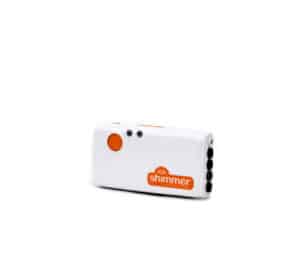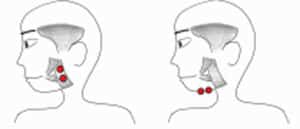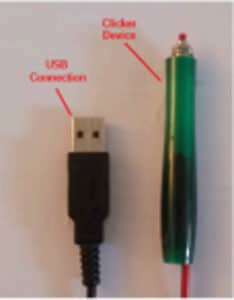Background & Objectives
Mindless eating, or the lack of awareness of the food we are consuming, has been linked to health problems attributed to unhealthy eating behaviour, including obesity. Traditional approaches used to moderate eating behavior often rely on inaccurate self-logging, manual observations or bulky equipment. Overall, there is a need for an intelligent and lightweight system which can automatically monitor eating behavior and provide feedback.
This case study looks at how researchers used Shimmer technology to develop a system that works in conjunction with real-time wristband haptic feedback to facilitate mindful eating.

System Overview
The data collection system consisted of custom hardware and software paired with a Shimmer3 EMG sensor and a standard laptop computer. Participants were mounted with standard surface electrodes connected to the Bluetooth enabled Shimmer3 EMG sensor. The data collection software was developed using Shimmer’s C# API. Participants were able to self-report chews and swallows by performing a short click or long-hold of a ‘clicker’ device respectively. All data was recorded concurrently and synchronized with video footage to complement the ground truth recording via the ‘clicker’.

For the purpose of mastication, the two primary masticatory muscle groups are the masseter muscles and the temporalis muscles used predominantly to control the elevation of the mandible. In the context of EMG, the similarity of the signals from the two sites demonstrates chewing.
Data Analysis
The data collected was filtered and processed to eliminate noise and movement artefacts. Specifically, a unidirectional Butterworth bandpass filter was applied to the EMG signal with a low cut-off frequency at 20 Hz and a high cut-off frequency at 500 Hz. The signal was then rectified using a full wave digital rectifier and normalised such that values lay within the 0-1 range. Each dataset was collected with self-reported ground truth labels.
Whilst this gave a good indication of individual chew and swallow events, it was only an approximate indicator of the signal activity ground truth and did not guarantee the identification of uniform and predictable onset and termination times. To correct this, the ground truth for each dataset underwent automatic and manual review to ensure fidelity. Firstly, automatic correction of chewing event onset and termination was applied, using threshold-based activity detection (based on the EMG of the masseter muscle). Accurate ground truth timings could then be identified, where periods of potential EMG activity intersect or lay within close temporal proximity to ground truth timestamps and used to correct ground truth. The same process was repeated for swallow ground truth correction, using submental activity.

A total of 18 features were extracted across two channels of EMG and used in the classification models based on previous literature. Please contact the below email address to learn more about this.
Real-time Haptic Feedback for Mindful Eating
In the second part of this study, haptic feedback was used to provide relatively covert feedback that would not demand special attention whilst still acting to draw the attention of the users back to their eating behavior. A Microsoft band was configured to provide four different patterns of vibrations based on a normalised eating rate (between 0.0-1.0): (1) No haptic pulses (representing a ‘low’ eating rate of around 0.0-0.3), (2) Periodic individual haptic pulses (representing a ‘moderate’ eating rate of around 0.3-0.6), (3) Periodic double haptic pulses (representing a ‘high’ eating rate of around 0.6-0.8), and (4) High intensity double haptic pulses (representing a ‘very high’ eating rate of around 0.8-1.0).

This feedback system required real-time, or near real-time, detection of chewing events which could then be used to extrapolate information regarding chewing rate and providing feedback. In developing the chewing detection algorithm, the researchers computed features for each signal segment of 0.5 seconds: the mean of the signal for each segment, the standard deviation, maximum amplitude, root mean square value, integrated EMG, mean frequency, and mean frequency band power. The features were normalised using reference voluntary contractions to determine the appropriate maximal amplitude expected during eating. The reference amplitude was obtained during a short period of calibration (through eating one piece of each of the available foods) for each participant, during which the reference values were calculated.
Summary and Future Research

The detection of various eating related features may be useful for providing valuable health-related feedback. In addition to visual evaluation of health (for instance through EMG for swallowing function monitoring), feedback regarding physiological processes and physical activity has been used for treatment of certain health conditions. For example, biofeedback aims to help an individual gain voluntary control of physiological processes to help treat conditions, as part of rehabilitation following a stroke, or for helping practice swallowing rehabilitation exercises in the treatment of swallowing disorders. The technological approach that was developed has the potential for other applications, for example, providing daily feedback regarding dietary intake goals based on automated detection of intake technique which has been used in conjunction with mobile based self-report of diet for weight change goals.
Overall, the work carried out in this study has major implications for several areas of research, particularly for studying eating habits and improving our understanding of eating behavior and the various influences upon eating choices such as food selection, intake volume, and intake speed.

